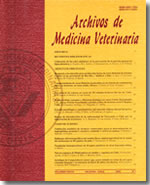Analysis of differentially expressed gene fragments in the head kidney of lipopolysaccharide-stimulated Malabar grouper (Epinephelus malabaricus)
Main Article Content
Abstract
The immunological effect and preliminary molecular mechanism of lipopolysaccharide (LPS) on Malabar grouper (Epinephelus malabaricus) were studied. The grouper was injected intraperitoneally twice (7 days apart) with 4 mg kg-1 body weight of LPS from Escherichia coli (test group; testers) or pH 7.2 phosphate buffer solution (control group; drivers). Twenty-eight days later, the mean antibacterial, lysozyme and polyphenol oxidase activities of the serum showed tester values of 0.228, 0.032 and 21.8 U/mlxmin respectively, and driver values of 0.200, 0.015 and 15.5 U/mlxmin. A subtracted cDNA library from the head kidney of LPS-stimulated Malabar grouper was constructed using suppression subtractive hybridization. A total of 376 clones from tester-specific expressed gene fragments were selected and sequenced, and 326 qualified expressed sequence tags (ESTs) were obtained. After searching with the BLASTn and BLASTx programs, 312 ESTs showed great similarity for 13 gene fragments (14 ESTs did not match any genes in the Genbank). Out of these 13 fragments two (15.4%) were related to immune defense (interferon regulatory factor 2-binding protein 2-A and T-complex protein 1-theta); five (38.5%) were related to transcription or translation; one (7.7%) was involved in metabolism (CT054 protein); two (15.4%) might encode myeloid leukemia differentiation protein homologue and G patch domain-containing protein 3; and three (23.1%) were oxygen transport genes that encode haemoglobin α chain, haemoglobin β chain and ferritin heavy chain. Results showed that LPS could significantly improve innate immunity and regulate the expression of genes related to immunity, cellular energy production, growth, metabolism and/or stress-resistance in Malabar grouper. Also, LPS could be used as an effective immunostimulant for this species and provided an insight to the mechanisms of the effects of LPS on aquatic animals at serological and molecular levels.

